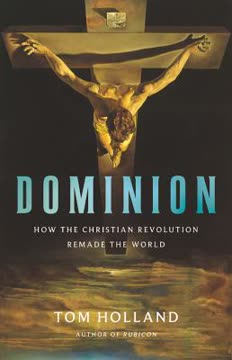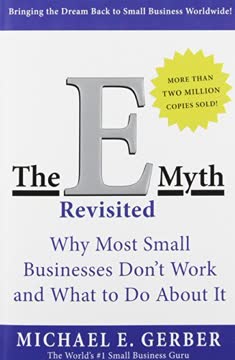Key Takeaways
1. Exit Planning: It's Good Business Strategy, Not Just an End Game
Exit planning is good business strategy. Exit planning is now.
Redefining Exit Planning. The book challenges the traditional view of exit planning as a distant, end-of-career activity. Instead, it advocates for integrating exit planning principles into daily business operations, transforming it into a proactive management strategy. This approach ensures that businesses are always prepared for a transition, regardless of when it occurs.
Strategic Integration. By aligning business decisions with long-term value creation, owners can build more resilient and attractive companies. This involves focusing on factors that drive enterprise value, such as strong management teams, documented systems, and diversified customer bases. Exit planning becomes a framework for making strategic choices that benefit the business today and in the future.
Proactive Approach. The book emphasizes the importance of taking action now to maximize business value. This proactive approach not only prepares the business for a potential sale but also enhances its current performance and profitability. By focusing on building a well-functioning, attractive business, owners can create a valuable asset that can be harvested at any time.
2. Baby Boomers' Wealth Transfer: A Generational Imperative
Over the next 10 to 20 years, we will likely see an unprecedented set of business exits. How ready are we as owners? Statistically speaking, not very.
Impending Wealth Transfer. The book highlights the massive transfer of wealth that is set to occur as Baby Boomer business owners retire. This demographic shift presents both a challenge and an opportunity for the economy. With trillions of dollars in privately held business wealth at stake, it is crucial for owners to prepare for a successful transition.
Owner Unpreparedness. The book reveals that a significant portion of business owners are not adequately prepared for their exit. Many lack formal transition plans, have not taken steps to enhance their business value, and have not considered their personal and financial needs after leaving their business. This lack of preparedness puts their wealth and legacy at risk.
Economic and Social Impact. The book emphasizes the broader implications of successful business transitions. By unlocking the wealth trapped in their businesses, owners can contribute to the economy, empower the next generation of entrepreneurs, and support their communities. A successful wealth transfer can have a positive ripple effect, benefiting society as a whole.
3. The Owner's Dilemma: Balancing Roles and Stakeholders
Being an owner is a tough job. A business owner has three roles: Management, Family, and Owner/Investor.
Multiple Conflicting Roles. The book acknowledges the complex roles that business owners must juggle. As managers, they are responsible for day-to-day operations. As family members, they must consider the needs and interests of their loved ones. As owners/investors, they expect a return on their investment. These roles often conflict, creating difficult decisions and trade-offs.
Stakeholder Considerations. The book emphasizes the importance of considering the needs of all stakeholders, including employees, customers, suppliers, and the community. A successful transition must benefit not only the owner but also those who depend on the business. This requires careful planning and communication to ensure a smooth and equitable transfer of ownership.
Succession Planning Challenges. The book highlights the challenges of family succession, noting that only a small percentage of family businesses survive to the third generation. This underscores the need for careful planning and preparation to ensure the long-term viability of the business. It also emphasizes the importance of developing successors who are capable and committed to leading the business forward.
4. Value Acceleration: A Management System for Life Planning
Value Acceleration is actually a life-planning management system you can use to make the timing of your exit irrelevant.
Beyond Exit Planning. The book presents Value Acceleration as more than just an exit planning process. It is a comprehensive management system that integrates business, personal, and financial goals. This holistic approach ensures that owners are not only prepared for their exit but also living fulfilling and prosperous lives along the way.
Making Timing Irrelevant. By focusing on building a valuable and transferable business, owners can make the timing of their exit less critical. They can be ready to sell or transition at any time, without sacrificing their financial security or personal fulfillment. This provides greater flexibility and control over their future.
Action-Oriented Approach. The book emphasizes the importance of taking action to implement Value Acceleration principles. It provides a step-by-step framework for identifying, protecting, building, harvesting, and managing business value. This action-oriented approach ensures that owners are not just planning but also actively creating the future they desire.
5. Master Planning: Aligning Personal, Financial, and Business Goals
Personal, financial, and business goals must be in alignment in order for you to successfully grow and transition your business.
The Three-Legged Stool. The book introduces the concept of Master Planning, which emphasizes the alignment of personal, financial, and business goals. This alignment is essential for a successful transition. If any of these three areas are out of balance, the entire plan can be jeopardized.
Personal Fulfillment. The book stresses the importance of personal planning, which is often overlooked by business owners. This involves identifying their passions, interests, and goals for life after business. A well-defined personal plan ensures that owners have a sense of purpose and fulfillment in their next chapter.
Financial Security. The book emphasizes the need for financial planning to ensure that owners have adequate resources to support their desired lifestyle after leaving their business. This involves assessing their income requirements, risk tolerance, and investment strategies. A sound financial plan provides peace of mind and financial security.
6. Value vs. Income: Shifting the Focus for Long-Term Wealth
Value is the primary long-term goal—not income. This sounds like a subtle play on words, but in reality, this is a significant paradigm shift.
Beyond Lifestyle Businesses. The book challenges the common focus on income as the primary goal of business ownership. While income is important, it is not the sole determinant of long-term wealth. The book advocates for shifting the focus to building enterprise value, which can be harvested at the time of exit.
The Power of the Multiple. The book explains how business value is determined by a multiple of earnings. By focusing on factors that increase the multiple, such as strong management teams, documented systems, and diversified customer bases, owners can significantly enhance their wealth. This requires a strategic approach to building a transferable and attractive business.
Team Alignment. The book emphasizes the importance of aligning the entire team around the goal of value creation. This involves educating employees about the factors that drive value and incentivizing them to contribute to its growth. By fostering a culture of ownership and entrepreneurship, owners can unlock the full potential of their business.
7. The Four Capitals (4 C's): Managing Intangible Assets
…the sum of everything everybody in a company knows that gives it a competitive edge.
The New Wealth. The book highlights the shift from physical assets to intangible assets as the primary drivers of wealth creation. In today's knowledge economy, intellectual capital is more valuable than land, natural resources, or machinery. This requires a new approach to managing and measuring business value.
The Four Capitals Framework. The book introduces the Four Capitals framework, which divides intellectual capital into four categories: Human, Customer, Structural, and Social. By managing these four capitals effectively, owners can build a more valuable and transferable business. This involves investing in talent, building strong customer relationships, documenting systems and processes, and fostering a positive culture.
Transferability is Key. The book emphasizes the importance of making intangible assets transferable. This means documenting knowledge, processes, and relationships so that they can be passed on to a new owner or management team. A transferable business is more attractive to buyers and more likely to succeed in the long run.
8. Relentless Execution: Turning Plans into Tangible Results
By thought the thing you want is brought to you, by action, you will receive it.
Beyond Planning. The book stresses that planning alone is not enough. A well-crafted plan is useless without the will to execute. The book advocates for building a culture of relentless execution, where action is prioritized and results are consistently achieved.
Discipline and Accountability. The book emphasizes the importance of discipline, accountability, and follow-through. This involves setting clear goals, assigning responsibilities, tracking progress, and holding team members accountable for their actions. A culture of accountability ensures that plans are not just created but also implemented effectively.
Continuous Improvement. The book advocates for a continuous improvement mindset, where setbacks are viewed as opportunities for learning and growth. This involves regularly reviewing progress, identifying areas for improvement, and recalibrating plans as needed. A culture of continuous improvement ensures that the business is always moving forward.
9. The Triggering Event: Identifying Your Starting Point
The first step in the Value Acceleration Methodology is to identify what you already have. This provides a baseline measurement of value going forward, which is needed for business planning, tax and estate planning, and personal planning.
Baseline Assessment. The book introduces the concept of the Triggering Event, which involves conducting a comprehensive assessment of the business and the owner's personal, financial, and business goals. This assessment provides a baseline measurement of value and identifies areas for improvement.
Financial Recasting. The book emphasizes the importance of recasting financial statements to reflect the true cash flow of the business. This involves adjusting for discretionary expenses, non-recurring items, and other factors that may distort the picture. A recasted financial statement provides a more accurate basis for valuation and decision-making.
Attractiveness and Readiness. The book introduces two key metrics: Business Attractiveness and Exit Readiness. These metrics provide a quantitative assessment of the business's appeal to potential buyers and the owner's preparedness for a transition. By understanding these metrics, owners can identify areas where they need to focus their efforts.
10. The Five Stages of Value Maturity: A Roadmap to Success
There are five stages to creating a more valuable business: Identify, Protect, Build, Harvest, and Manage.
A Sequential Approach. The book outlines five stages of value maturity: Identify, Protect, Build, Harvest, and Manage. These stages provide a roadmap for owners to follow as they work to maximize the value of their business. Each stage builds on the previous one, creating a cumulative effect.
Protecting Value. The book emphasizes the importance of protecting value by mitigating personal, financial, and business risks. This involves creating contingency plans, evaluating insurance coverage, and addressing legal and regulatory issues. Protecting value is the foundation for building a more valuable business.
Building Value. The book focuses on building value by improving intangible assets, such as human capital, customer relationships, and documented systems. This involves investing in talent, building strong customer relationships, and creating a positive culture. Building value is the key to achieving a higher multiple at the time of exit.
11. The Importance of Transparency: Involving Your Team in the Process
I don’t want anyone to know I am considering exiting. The whole place, everything I built, will fall apart if they do.
Counterintuitive Approach. The book challenges the common belief that owners should keep their exit plans secret. Instead, it advocates for transparency and open communication with key employees, customers, and suppliers. This builds trust and ensures a smooth transition.
Empowering Employees. By involving employees in the exit planning process, owners can foster a sense of ownership and commitment. This can lead to increased productivity, innovation, and loyalty. It also helps to identify and develop successors who are capable of leading the business forward.
Building Confidence. Transparency can also build confidence among customers and suppliers. By communicating their plans and demonstrating their commitment to a smooth transition, owners can reassure stakeholders that the business will continue to thrive. This can help to maintain customer relationships and supplier agreements.
12. The Power of Community: Stakeholders in Your Success
…the business owner is, in fact, the giver of life.
Beyond the Business. The book emphasizes the importance of recognizing the broader impact of business transitions. Owners are not just responsible for their own financial security but also for the well-being of their employees, customers, suppliers, and the community. A successful transition can have a positive ripple effect, benefiting all stakeholders.
Philanthropic Opportunities. The book highlights the role of privately held businesses in supporting philanthropy. By unlocking the wealth trapped in their businesses, owners can create opportunities to give back to their communities and support causes they care about. This can be a fulfilling and meaningful way to leave a legacy.
Supply Chain Continuity. The book emphasizes the importance of ensuring the continuity of the supply chain. Many large corporations rely on small, family-owned businesses as suppliers. By helping these businesses prepare for their transitions, corporate leaders can protect their own operations and ensure a stable supply of goods and services.
Last updated:
Review Summary
"Walking to Destiny" is highly praised for its comprehensive coverage of exit planning for business owners. Readers appreciate its clear, actionable approach and methodical flow, making complex concepts accessible. The book is seen as an invaluable resource for both newcomers and experienced professionals. Many reviewers highlight its practical insights, real-world examples, and useful charts. While some initially approached it with skepticism, most found it exceeded expectations. It's particularly recommended for baby boomer business owners and those seeking to prepare their businesses for sale or transition.
Similar Books








Download PDF
Download EPUB
.epub digital book format is ideal for reading ebooks on phones, tablets, and e-readers.




